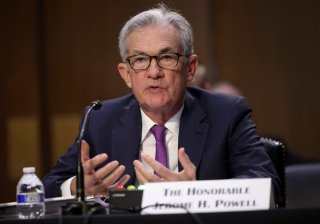Key Fed Metric Suggests the U.S. May Be on the Brink of a Recession
Talk of a recession has accelerated over the past several months largely due to red-hot inflation and an increasingly hawkish Fed.
One closely followed Federal Reserve gauge is suggesting that the United States is on the verge of a recession.
In an update posted on Tuesday, per CNBC, the Atlanta Fed’s GDPNow tracker is pointing to an annualized gain of 0.9 percent for the second quarter, which means that the economy is plodding toward a second straight quarter of negative growth.
This would be a “rule-of-thumb definition for a recession,” the business news outlet wrote.
“Following a 1.5 percent drop in the first three months of the year, the indicator is showing the economy doesn’t have much further to go before it slides into what many consider a recession,” it continued.
Talk of a recession has accelerated over the past several months largely due to red-hot inflation that is sitting at a forty-year high and an increasingly hawkish Fed. Last week, Fed Reserve Gov. Christopher Waller confirmed his stance that he wants to keep hiking interest rates in half-percentage point steps until inflation is fully under control.
“I support tightening policy by another fifty basis points for several meetings,” he said during an event hosted by the Institute for Monetary and Financial Stability in Frankfurt, Germany.
“In particular, I am not taking fifty basis-point hikes off the table until I see inflation coming down closer to our 2 percent target. And, by the end of this year, I support having the policy rate at a level above neutral so that it is reducing demand for products and labor, bringing it more in line with supply and thus helping rein in inflation,” he added.
Similar sentiments have been echoed by Federal Reserve Bank of St. Louis President James Bullard, who recently contended that the Fed is in danger of losing control of how much inflation households are expecting. He has urged policymakers to raise interest rates to 3.5 percent this year, adding that some of those hikes could be reversed late next year or in 2024.
If the Fed indeed decides to raise interest rates by fifty basis points at both the June and July meetings, the benchmark rate would be in a range of 1.75 percent to 2 percent. “I think we have a good plan for now,” Bullard told reporters, per Bloomberg.
However, there are some experts on Wall Street who believe that strong consumer spending and job growth could help the United States avoid a recession this year.
“Right now, it looks like any talk of a recession is a 2023 story. It’s not this year,” Joseph Brusuelas, chief economist at consulting firm RSM, told CNBC.
“We would need to see future shocks to the business cycle. My sense is the economy is going to slow, but only really back to its long-term trend growth rate of 1.8 percent,” he concluded.
Ethen Kim Lieser is a Washington state-based Finance and Tech Editor who has held posts at Google, The Korea Herald, Lincoln Journal Star, AsianWeek, and Arirang TV. Follow or contact him on LinkedIn.
Image: Reuters.

